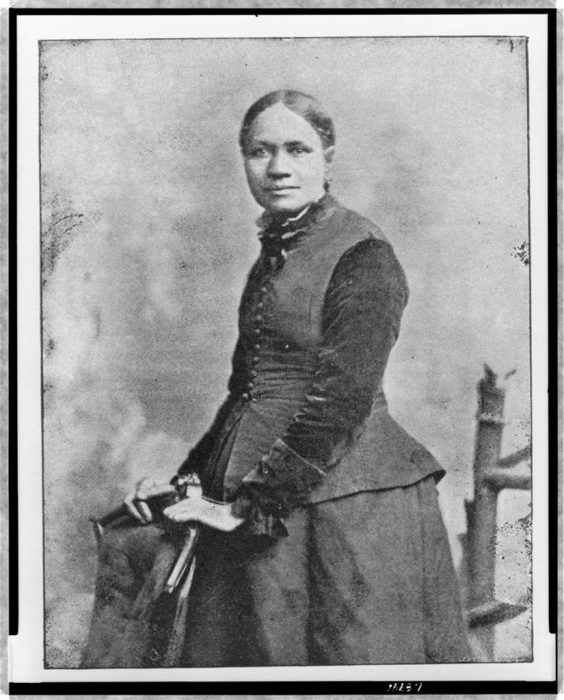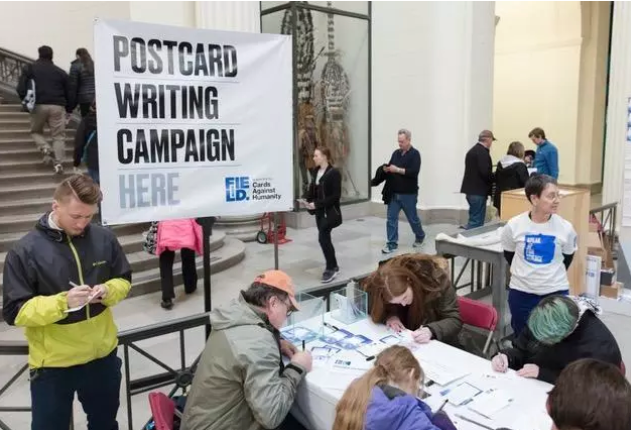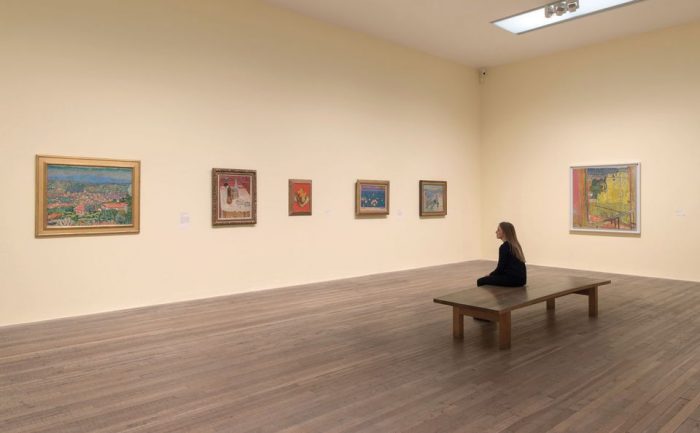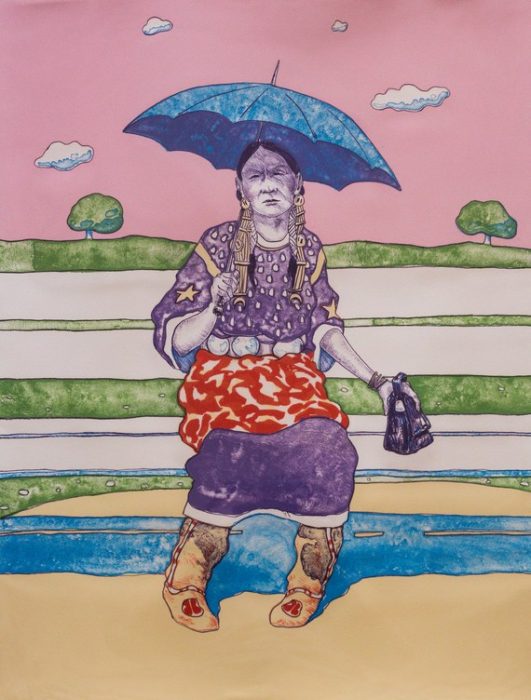ICYMI: Highlights from the week that was March 31 – April 6, 2019
No one can keep up with everything, so let us do it for you. We’ll gather the top Smithsonian stories from across the country and around the world each week so you’ll never be at a loss for conversation around the water cooler.
Women were in the news this week: Women’s suffrage, a women’s museum, and a Revolutionary War hero who may have been (or may not have been) a woman.

Will the United States Finally Get a National Women’s History Museum? Congress Just Introduced Two Bipartisan Bills to Build One
Susan Collins and Diane Feinstein have teamed up on the Senate bill, while Carolyn Maloney has introduced companion legislation in the House.
ArtNet News, April 1

The congressional leaders who are spearheading the charge for a Smithsonian Women’s History Museum. Courtesy American Museum of Women’s History Congressional Commission.
As Women’s History Month drew to a close last week, Congress introduced bipartisan bills in both the House of Representatives and the Senate to establish a new Smithsonian museum dedicated to women’s history.
“The US needs and deserves a comprehensive women’s history museum that will inspire men and women of all ages and for future generations,” said representative Carolyn Maloney, a democrat from New York, in a statement. “For too long, women who have made extraordinary contributions to our nation have been left out of the telling of our history. We can, and we must, change that.” Read more from ArtNet News.
How a new exhibit corrects our skewed understanding of women’s suffrage
Addressing racism in the suffrage movement.
The Washington Post, March 29

Frances E.W. Harper, 1898. (Library of Congress; Prints and Photographs Division)
The National Portrait Gallery will celebrate the centennial of U.S. women winning the right to vote with the exhibit “Votes for Women: A Portrait of Persistence.” This exhibit makes history not for its commemoration of suffrage, but for the recognition it finally gives to African American women such as Frances Ellen Watkins Harper, Julia A. Foote, Ida B. Wells Barnett, Mary Church Terrell and Alice Dunbar-Nelson.
It is about time.
Commemorations of suffragists such as Elizabeth Cady Stanton and Carrie Chapman Catt have begun to address the racism embedded within their political campaigns. White suffrage organizations allied with white Southerners to pass the 19th Amendment, ultimately distancing themselves from black support, even trying to segregate black women into special sections of suffrage parades. Read more from the Washington Post.
Amphibian apocalypse is twice as bad as scientists thought
More than 500 frog and salamander species are suffering from a deadly fungal disease.

Even species like this arboreal bromeliad tree frog (Bromeliohyla bromeliacea) have been found infected with chytrid. (Jonathan E. Kolby)
The Washington Post, March 28
There is a plague ripping through the amphibian species of the world. It’s caused by fungus that’s invisible to the naked eye and spreads easily by many means. It kills by disrupting the way these creatures breathe through their skin, essentially suffocating frogs and salamanders.
The disease is called chytridiomycosis, and according to a landmark study published Thursday in the journal Science, it’s even worse than we thought. Read more from the Washington Post.
Winners of Smithsonian Magazine’s 2018 Photo Contest
The Atlantic, April 2

Grand Prize: Newest Cowboy in Town. Newborn Jestin is welcomed by his father, Jessie, at his home in Cleveland, Mississippi.
© Rory Doyle. All rights reserved.
Selected from more than 48,000 entries, the winning photographs from Smithsonian magazine’s 16th annual competition have been announced. The Grand Prize winner this year, Newest Cowboy in Town, comes from the Mississippi-based photographer Rory Doyle. Below are the winning images from the following categories: Natural World, The American Experience, Travel, People, Altered Images, and Mobile, as well as the Readers’ Choice winner. Captions were written by the photographers. Read more from the Atlantic.
How museums are responding to an era of alternative facts
The Boston Globe, April 3

Museumgoers showing their support of science at The Field Museum in Chicago. ZACHARY JAMES JOHNSTON/THE FIELD MUSEUM
Josh Perelman stands reverently above a glass-covered display case at the center of a handsome room with dark red walls trimmed in sturdy oak, and gestures toward the document inside.
It’s a letter written by George Washington to a Jewish congregation in Newport, R.I., after that state became the last of the original 13 colonies to ratify the Constitution but before the Bill of Rights would institutionalize the freedom of religion.
The new United States would boast “a Government which to bigotry gives no sanction, to persecution no assistance,” Washington promised. Read more from The Boston Globe.
Park Service defends funds used to stay open during shutdown
The Hill, April 3
Democrats grilled National Park Service (NPS) leadership about the decision to keep parks open during last year’s government shutdown as the agency defended its 2020 budget on Capitol Hill Wednesday.
NPS Deputy Director Dan Smith appeared before a House Appropriations subcommittee to defend a budget that makes nearly $500 million in cuts to the agency.
But beyond budget cuts to an agency overseeing parks that received an increase in visitors last year, many Democrats were also concerned about damage to the parks sustained during the 35-day partial government shutdown. The shutdown decreased overall revenue given the absence of paid entry fees. Read more from The Hill.
The Average Person Spends 27 Seconds Looking at a Work of Art. Now, 166 Museums Are Joining Forces to Ask You to Slow Down
Museums in Australia, Canada, the UK, the US, and elsewhere are holding special events for Slow Art Day on April 6.
ArtNet News, April 4

There are slow art tours of “Pierre Bonnard: The Colour of Memory,” currently on view at the Tate Modern. Photo courtesy of the Tate Modern.
Moving through an exhibition, it often feels like visitors are in a race to the finish. They are certainly rushing: the average person spends just over 27 seconds looking at a great work of art, according to a study published in Psychology of Aesthetics, Creativity, and the Arts in 2017.
If that seems remarkably short to you, we have good news: Slow Art Day, which aims to encourage people that it’s the quality, not quantity, of art-looking that matters, takes place this Saturday, April 6. Its self-described mission? “[To] help more people discover for themselves the joy of looking at and loving art.” Read more from ArtNet News.
Celebrate Pete Seeger’s Centennial with a Never-Before-Heard Pete Seeger Recording
Jeff Place, a curator and senior archivist at Smithsonian Folkways Recordings, shares a yet-to-be-released song by the legendary folkster, who died in 2014.
Vanity Fair, March 29

Pete Seeger. Photo by Tom Copi
Pete Seeger, who died in 2014 at the age of 94, saw innumerable changes in American politics during his long career. Although he was blacklisted for his left-wing political beliefs during the era of Joseph McCarthy, he went on to play at a concert for President Barack Obama’s inauguration in 2009. And as democratic socialism finds a new foothold among millennials, his message of justice and egalitarianism has found new relevance. A few years ago, a prescient team at Smithsonian Folkways Recordings, the nonprofit record label housed at the Smithsonian Center for Folklife and Cultural Heritage, began planning to celebrate the centennial of his 1919 birth. On May 3, it will release Pete Seeger: The Smithsonian Folkways Collection, a box set that collects countless recordings Seeger made during his lifetime, including some that have never before been released. Read more from Vanity Fair.
‘It’s a woman. It’s not Pulaski.’: New documentary argues Revolutionary War hero was intersex
The Chicago Tribune, April 3

An actor portrays Revolutionary War hero Gen. Casimir Pulaski in the new Smithsonian Channel documentary “The General was Female?” (Smithsonian Channel)
When the skeleton believed to belong to the Revolutionary War hero Casimir Pulaski was first examined by modern scientists in the late 1990s, the results were disappointing.
“You’ll just have to shoot me,” a forensic anthropologist told the head of the scientific team, according to a new Smithsonian Channel documentary.
“It’s a woman. It’s not Pulaski.”
The team soon realized there were at least three possible explanations for the unusual finding: The bones they’d extracted from a well-known monument in Savannah, Ga., may have belonged to someone other than Pulaski. But it was also possible that Pulaski was a biological woman who lived as a man. And it was possible that Pulaski was one of the estimated 1 in 1,500 people who are born intersex, or with bodies that don’t fit neatly into the standard definitions of male and female. Read more from the Chicago Tribune.
A New Exhibit Showcases the Groundbreaking Work of Late Indigenous Artist T. C. Cannon
Vogue, April 5

Waiting for the Bus (Anadarko Princess) (1977). Lithograph. Anne Aberbach and Family, Paradise Valley, Arizona. © 2019 Estate of T. C. Cannon
Photo: Thosh Collins/National Museum of the American Indian
T. C. Cannon, the late Caddo and Kiowa artist who lived much of his life in Santa Fe, New Mexico, is one of the most influential indigenous artists in the world. You just haven’t seen his work yet. Part of that is because his paintings have rarely been on view in one space—until now. A new exhibition, “T. C. Cannon: At the Edge of America,” will open at New York’s National Museum of the American Indian from April 6 to September 16, traveling from the Peabody Essex Museum in Salem, Massachusetts. Read more from Vogue.
Posted: 11 April 2019
-
Categories:
American Indian Museum , Portrait Gallery , Tropical Research Institute





